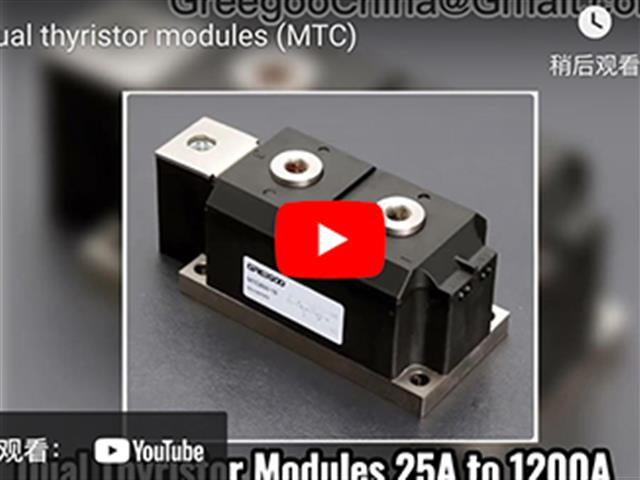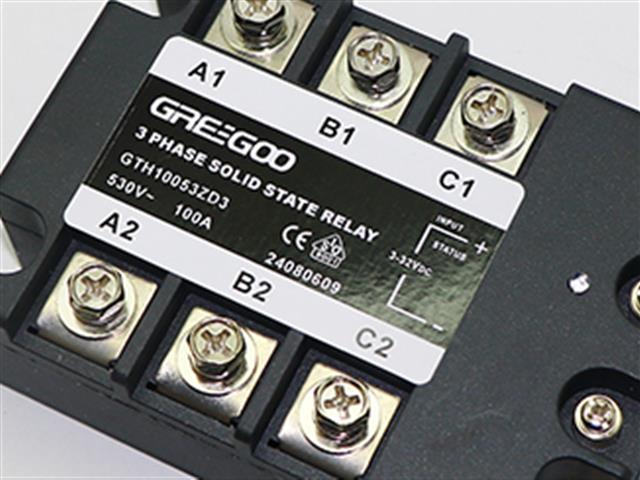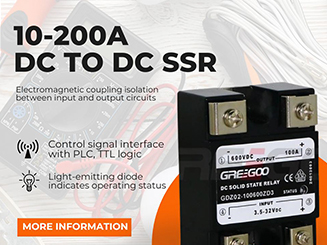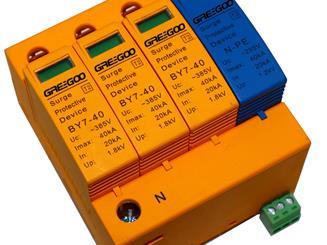Vacuum Contactor vs. AC Contactor, What is the Differences?
Vacuum contactors and AC contactors are both used to control electrical circuits but have significant differences in design and application. This article examines their functionality, advantages, common applications, and key factors to consider when choosing between vacuum and AC contactors for your specific requirements.
Table of Contents
1. What Are Contactors?
2. Vacuum Contactor: An Overview
3. AC Contactor: An Overview
4. Key Differences Between Vacuum Contactors and AC Contactors
5. Which One Should You Choose?
6. Conclusion
When working with electrical systems, particularly in industrial and commercial settings, selecting the right contactor is critical. Vacuum contactors and AC contactors both control electrical circuits by opening or closing contacts, but their design, functionality, and applications differ significantly. This guide will clarify the differences to help you make an informed decision.
If you’re struggling to choose the right contactor, our expert engineers at Greegoo are here to assist! Contact us now for personalized guidance to ensure the best solution for your electrical systems.
1. What Are Contactors?
Before exploring the differences, let’s define contactors and their role in electrical systems.
1.1 Definition of a Contactor
A contactor is an electrically controlled switch designed to manage power circuits. Unlike circuit breakers, which protect against overloads, contactors are built for frequent switching under normal conditions. They are essential in applications like motor control, lighting, heating, and capacitor banks.
1.2 Importance of Contactors
Contactors are vital for automation, ensuring safe and efficient operation of electrical equipment in heavy-duty applications requiring frequent switching.
With years of expertise, Greegoo is a trusted brand in low & medium vacuum contactors and AC motor control contactors. Explore our products at greegoo.com/products.
2. Vacuum Contactor: An Overview
Vacuum contactors are specialized devices that operate in a vacuum-sealed environment.

2.1 How Vacuum Contactors Work
In a vacuum contactor, contacts are housed in a vacuum-sealed chamber. When energized, the contacts close to allow current flow; when de-energized, they open to break the circuit. The vacuum environment minimizes arc formation, protecting contacts and surrounding equipment.
2.2 Advantages of Vacuum Contactors
High Durability: The absence of oxygen prevents contact oxidation and erosion, extending lifespan.
Low Maintenance: Reduced arc formation minimizes maintenance needs.
Quiet Operation: Ideal for noise-sensitive environments due to silent switching.
Compact Design: Smaller and lighter, suitable for space-constrained installations.

Low voltage Vacuum Contactor 1.14KV
2.3 Common Applications
Vacuum contactors excel in medium voltage applications (from 1.14KV to 40.5 kV), such as motor control, transformers, and capacitors in medium-voltage networks. They are critical in industries like mining, metal processing, and utilities where reliability is paramount.
3. AC Contactor: An Overview
AC contactors are widely used in low voltage applications.
3.1 How AC Contactors Work
AC contactors function similarly to vacuum contactors but operate in air or gas. An electromagnetic coil creates a magnetic field to close the contacts when energized, allowing current flow. When de-energized, a spring mechanism opens the contacts, breaking the circuit.

3.2 Advantages of AC Contactors
Cost-Effective: More affordable than vacuum contactors, ideal for budget-conscious projects.
Widely Available: Easy to source and replace due to their widespread use.
Versatile: Suitable for various loads in low voltage applications.

LC1-D AC Contactor - Magnetic Contactor
3.3 Common Applications
AC contactors are commonly used in motor control circuits, HVAC systems, lighting control, and other general-purpose applications with operating voltages up to 690 volts.
♦ High Power AC Contactor 1450A to 3200A
♦ Miniature Magnetic Contactor 6A 9A 12A
4. Key Differences Between Vacuum Contactors and AC Contactors
Here’s a detailed comparison of vacuum and AC contactors:
4.1 Operating Medium
Vacuum Contactor: Operates in a vacuum, eliminating arc formation.
AC Contactor: Operates in air or gas, where arcs may form during switching.
4.2 Durability and Maintenance
Vacuum Contactor: Highly durable with minimal maintenance due to reduced arc damage.
AC Contactor: Susceptible to contact wear and arc damage, requiring more frequent maintenance.
4.3 Cost
Vacuum Contactor: More expensive due to advanced design and materials.
AC Contactor: Cost-effective and widely accessible.
4.4 Application Range
Vacuum Contactor: Ideal for medium voltage, high reliability applications.
AC Contactor: Best for low voltage, general purpose applications.
5. Which One Should You Choose?
The choice between vacuum and AC contactors depends on your application’s requirements:
Choose Vacuum Contactors for medium voltage systems (e.g., 1,140–36,000 volts) where durability and low maintenance are critical, such as in mining or utilities.
Choose AC Contactors for low voltage applications (up to 690 volts) where cost and availability are priorities, such as in HVAC or lighting control.
Consider factors like voltage, switching frequency, environmental conditions, and budget when deciding. For expert advice, contact Greegoo’s team.

Conclusion
Vacuum contactors and AC contactors each offer unique benefits tailored to specific applications. Vacuum contactors provide superior durability and low maintenance for medium voltage systems, while AC contactors are cost-effective and versatile for lower-voltage needs. Understanding these differences ensures you select the right contactor for optimal safety and efficiency.
For more information on our range of contactors, visit greegoo.com/products.
Get Reliable Electrical Solutions for Your Project
Contact our experts at Greegoo for tailored advice and high-quality contactor solutions. We’ll respond within 12 hours—no spam, just solutions!
20 Years of Experience | 50 Countries & Regions Served | 500 Satisfied Customers | 30,000 ㎡ Manufacturing Facility

𝑫𝒖𝒂𝒍 𝑻𝒉𝒚𝒓𝒊𝒔𝒕𝒐𝒓 𝑴𝒐𝒅𝒖𝒍𝒆 - 𝑻𝒉𝒚𝒓𝒊𝒔𝒕𝒐𝒓-𝑻𝒉𝒚𝒓𝒊𝒔𝒕𝒐𝒓 𝑴𝒐𝒅𝒖𝒍𝒆 - 𝑷𝒉𝒂𝒔𝒆 𝑪𝒐𝒏𝒕𝒓𝒐𝒍 𝑻𝒉𝒚𝒓𝒊𝒔𝒕𝒐𝒓 𝑴𝒐𝒅𝒖𝒍𝒆 - 𝑺𝑪𝑹 𝑴𝒐𝒅𝒖𝒍𝒆 - 𝑺𝒊𝒏𝒈𝒍𝒆 𝑻𝒉𝒚𝒓𝒊𝒔𝒕𝒐𝒓 𝑴𝒐𝒅𝒖𝒍𝒆
𝑫𝒖𝒂𝒍 𝑻𝒉𝒚𝒓𝒊𝒔𝒕𝒐𝒓 𝑴𝒐𝒅𝒖𝒍𝒆 - 𝑻𝒉𝒚𝒓𝒊𝒔𝒕𝒐𝒓-𝑻𝒉𝒚𝒓𝒊𝒔𝒕𝒐𝒓 𝑴𝒐𝒅𝒖𝒍𝒆 - 𝑷𝒉𝒂𝒔𝒆 𝑪𝒐𝒏𝒕𝒓𝒐𝒍 𝑻𝒉𝒚𝒓𝒊𝒔𝒕𝒐𝒓 𝑴𝒐𝒅𝒖𝒍𝒆 - 𝑺𝑪𝑹 𝑴𝒐𝒅𝒖𝒍𝒆 - 𝑺𝒊𝒏𝒈𝒍𝒆 𝑻𝒉𝒚𝒓𝒊𝒔𝒕𝒐𝒓 𝑴𝒐𝒅𝒖𝒍𝒆
Read More
Solid State Relay, Direct Factory Price, Greegoo is your Best Choice!
Solid State Relay, Direct Factory Price, Greegoo is your Best Choice!
Read More
10A to 180A DC to DC Solid State Relay
10A to 180A DC to DC Solid State Relay, 60V, 100V, 200V, 600V, 1200VDC.
Read More
What is the main differences between Type 1 and Type 2 SPD?
It's worth noting that a comprehensive surge protection strategy may involve using both Type 1 and Type 2 SPDs in combination, along with other protective measures, to ensure maximum protection for electrical systems and connected devices.
Read More













